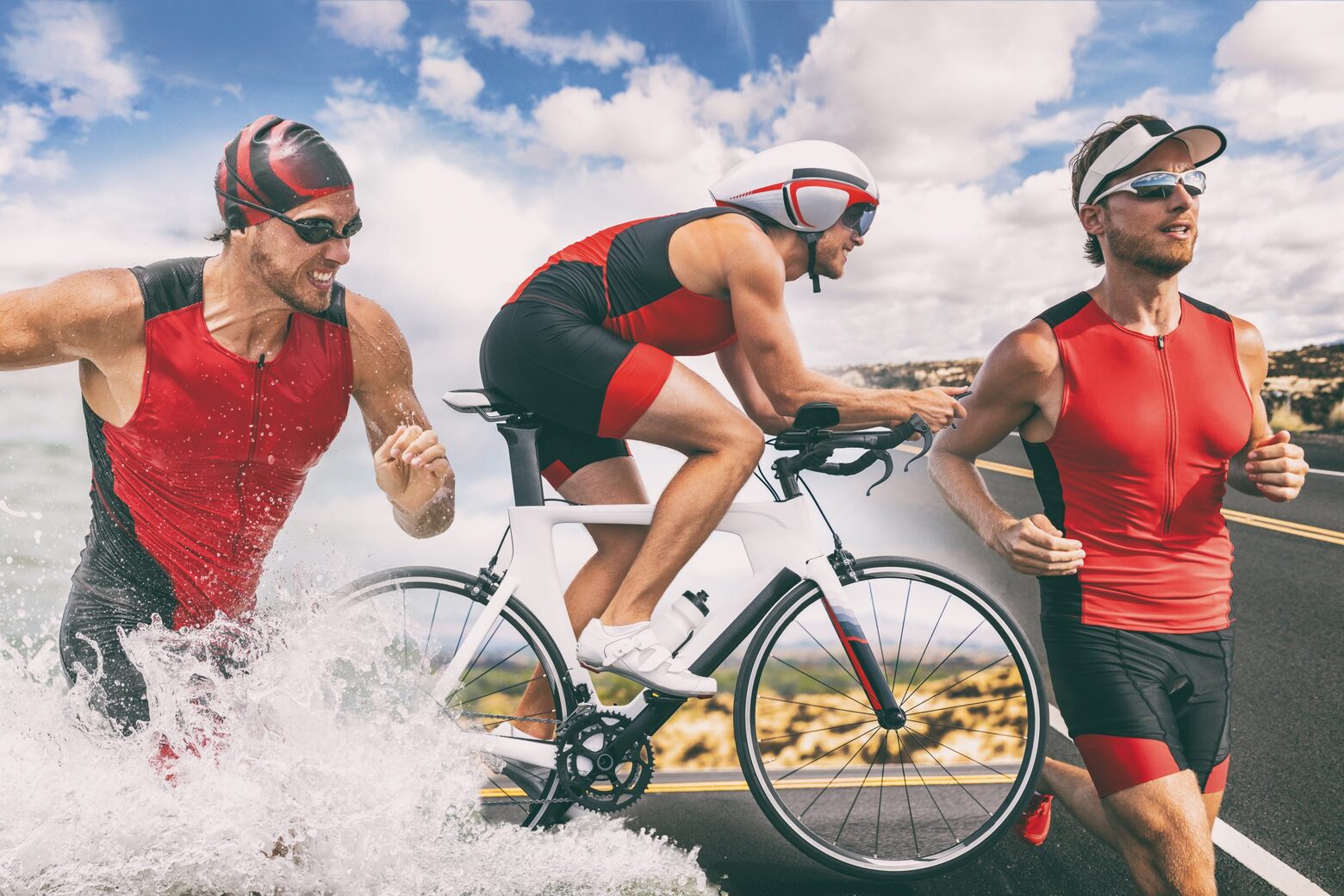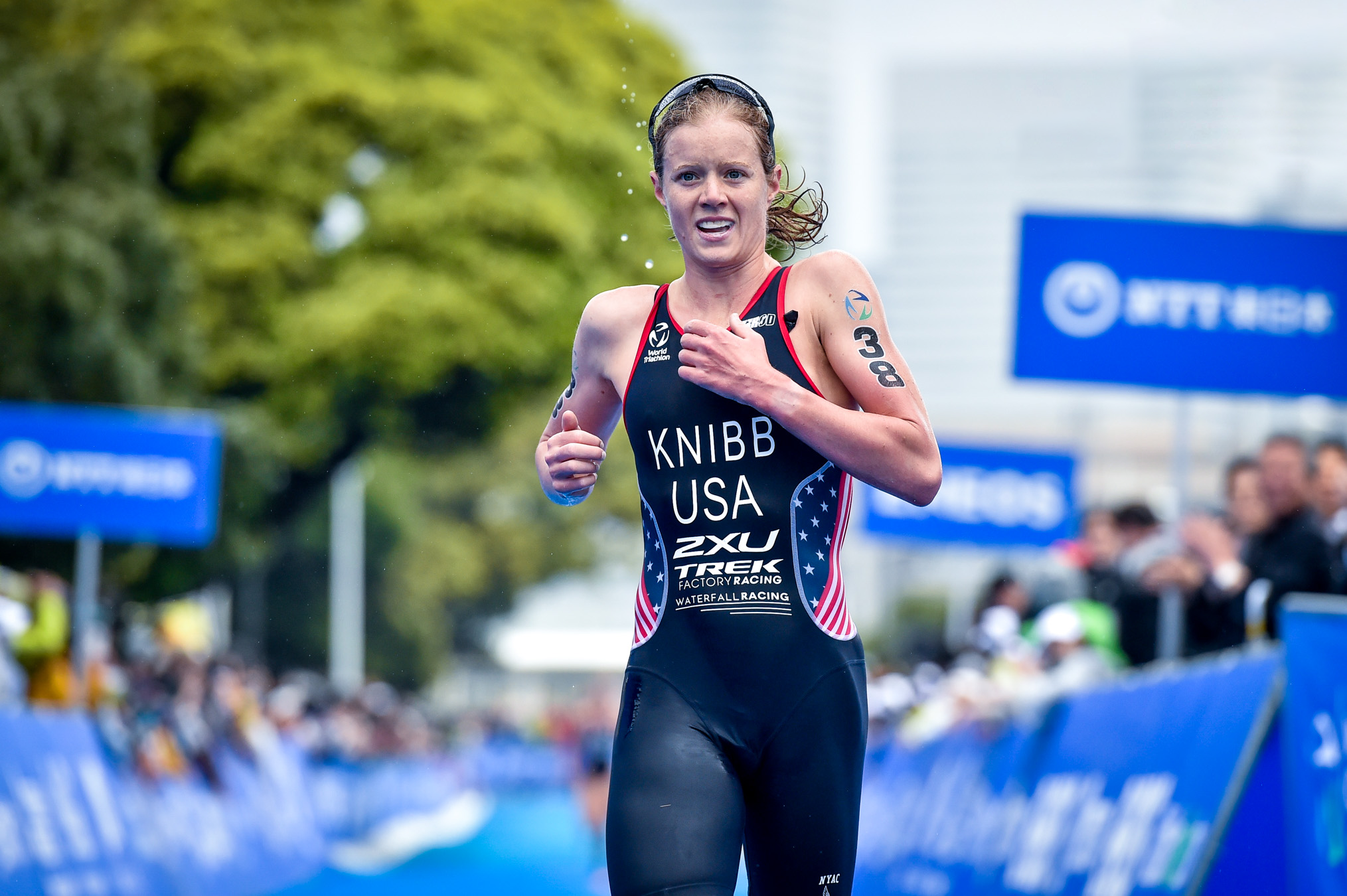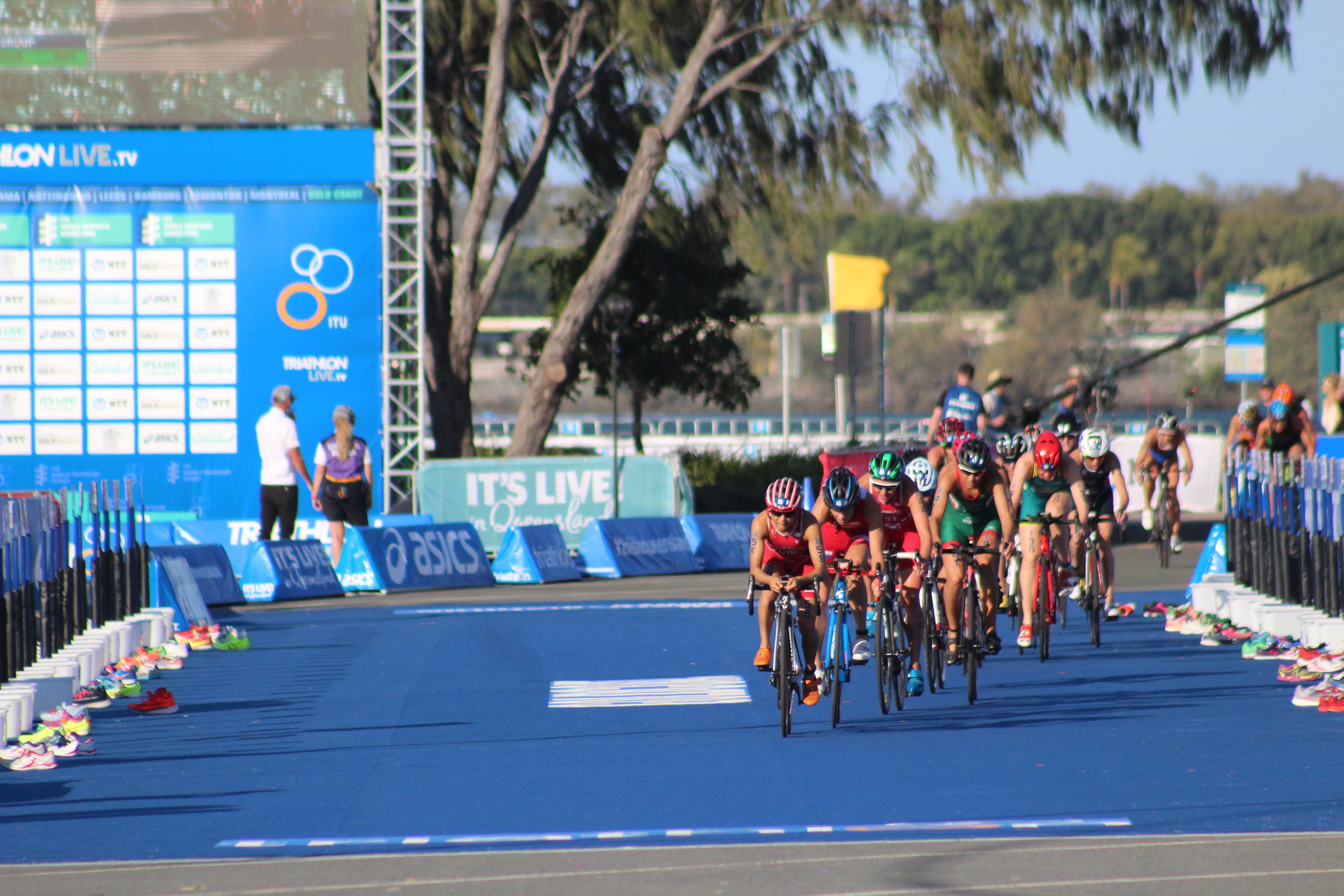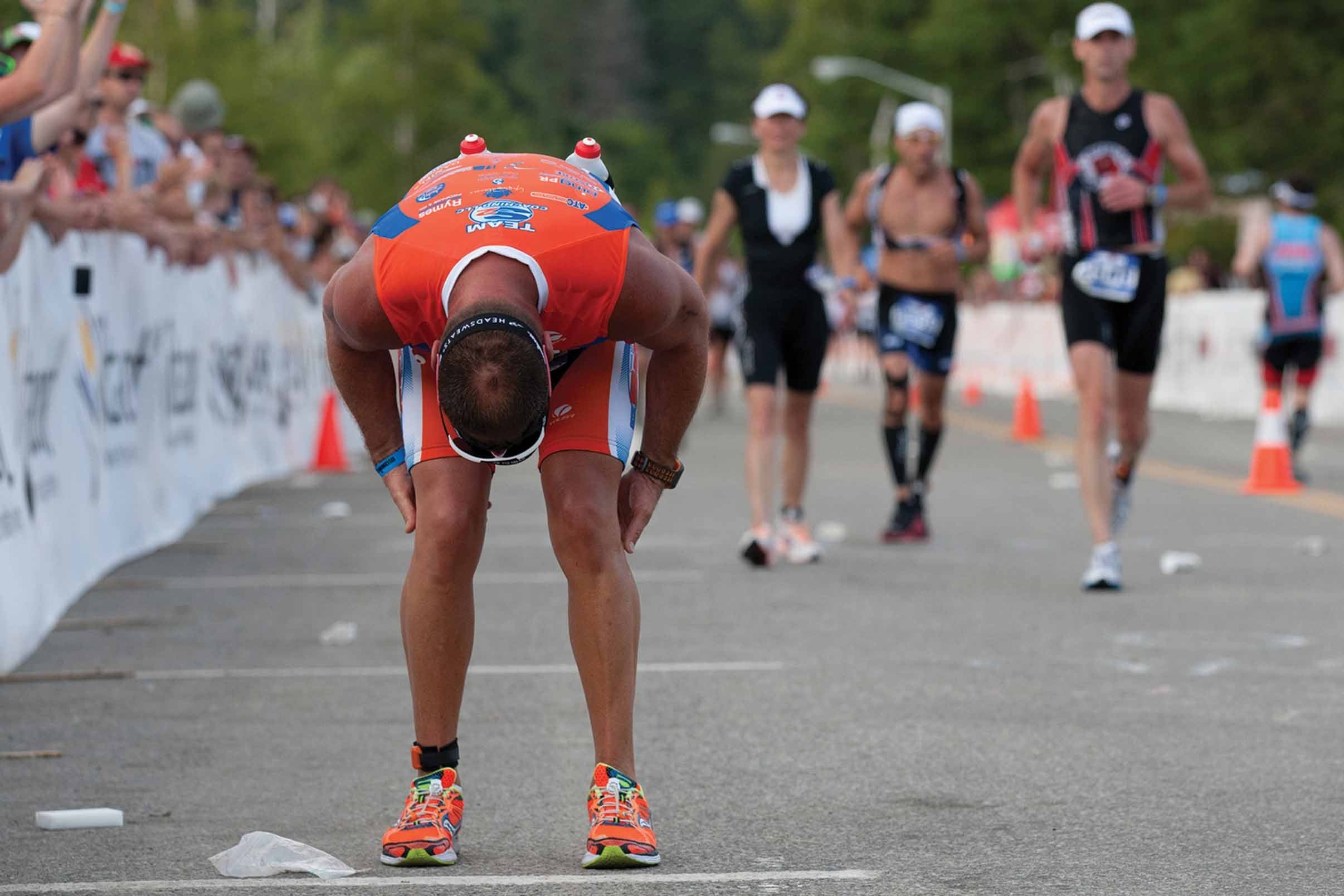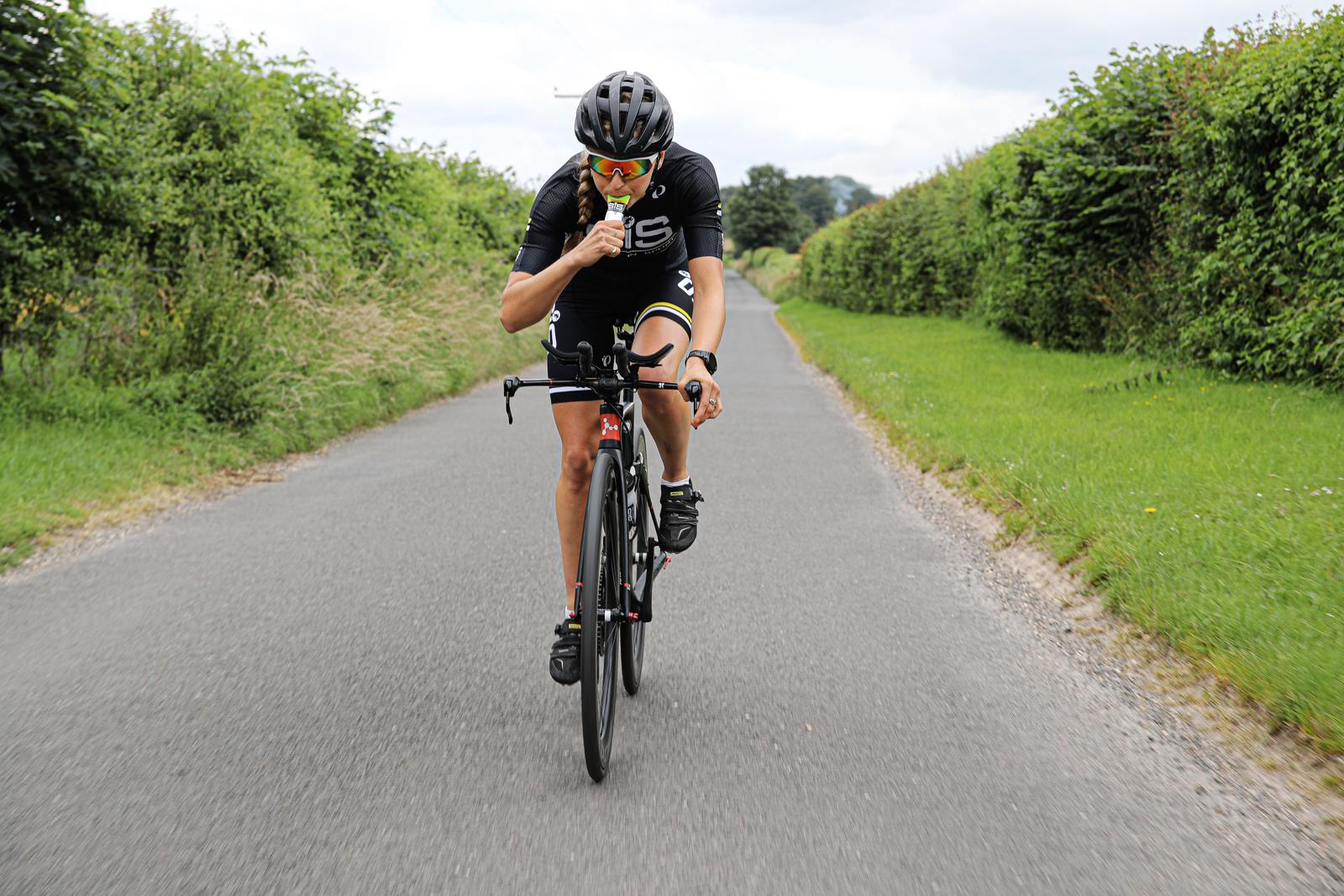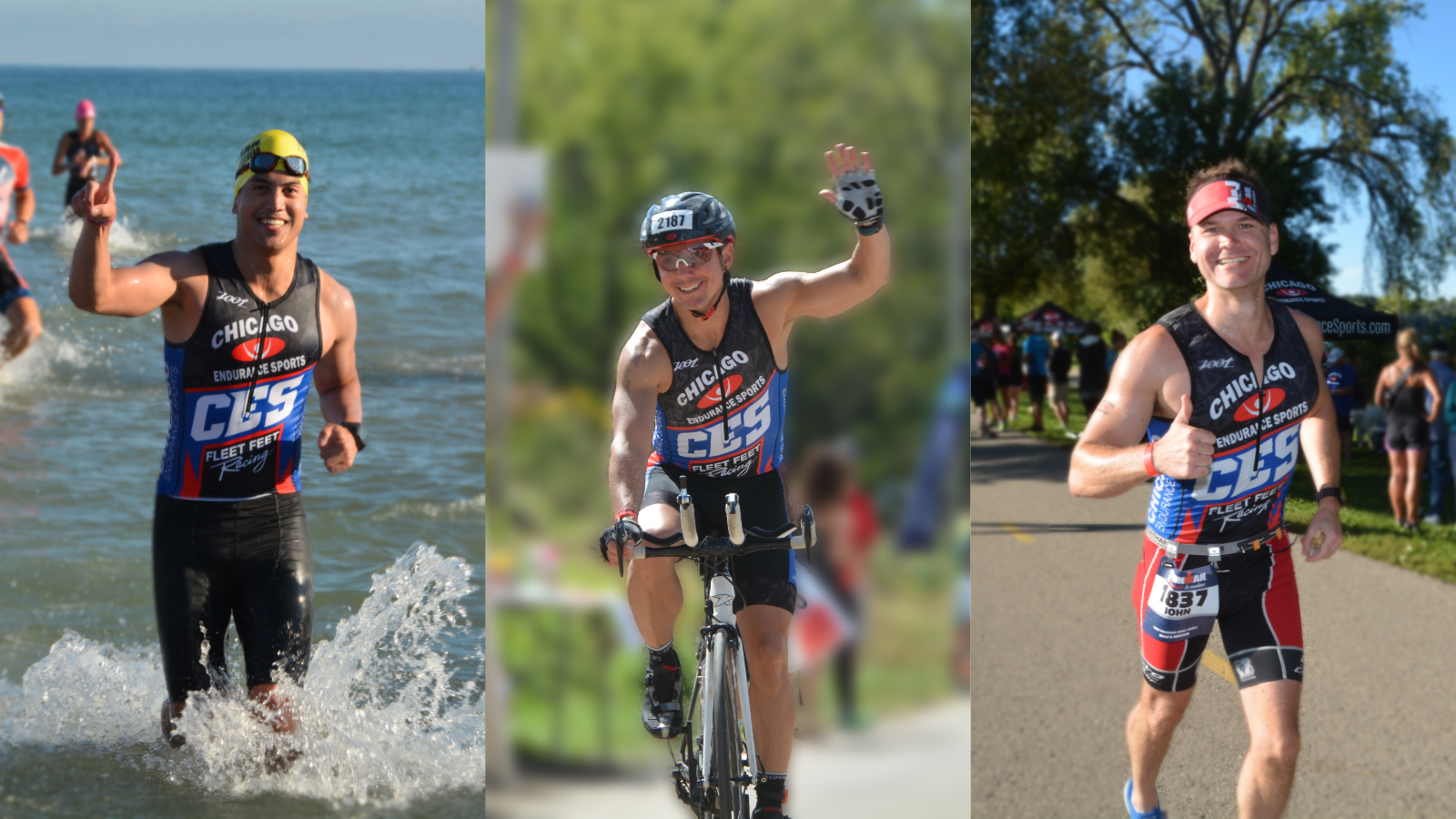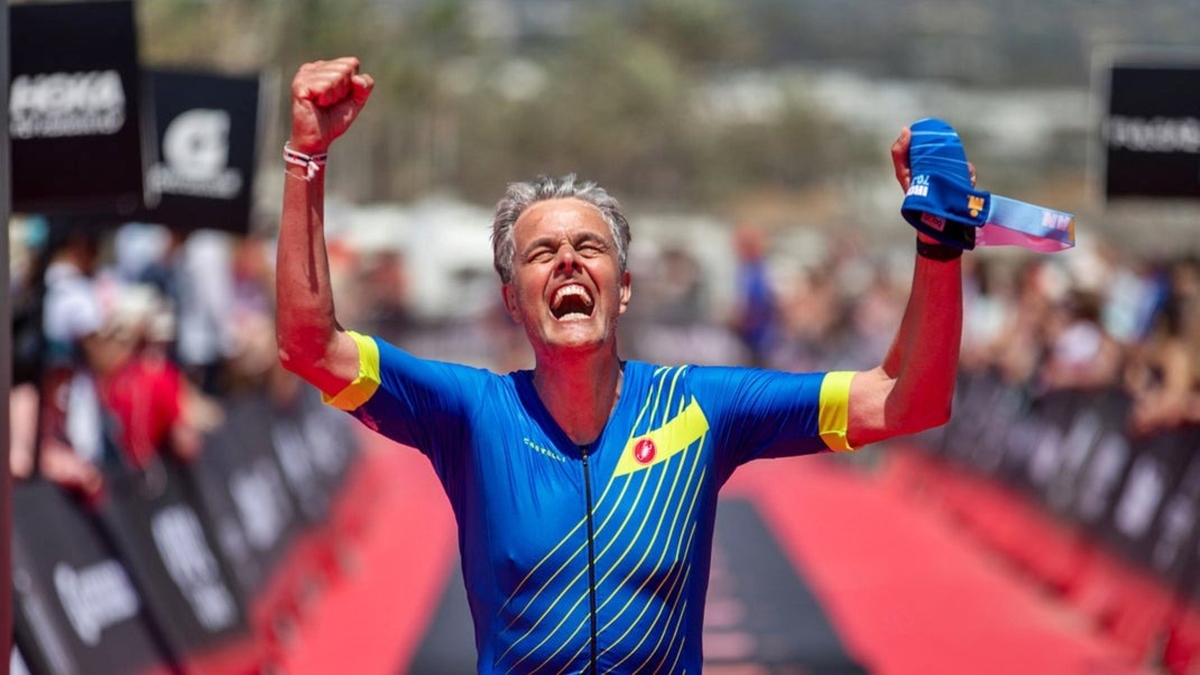

Featured
How Many Days To Rest Before A Triathlon
Modified: January 2, 2024
Discover the best approach to rest before a triathlon. Featured tips on how many days you should take off to recover and optimize performance.
Introduction
Preparing for a triathlon requires not only physical training but also careful consideration of rest and recovery. Many athletes focus solely on their training regimen, neglecting the crucial role that rest plays in optimizing performance and reducing the risk of injury. In the fast-paced world of triathlon, finding the right balance between training and rest is essential to achieve peak performance and maintain overall well-being.
Resting before a triathlon is not just about taking time off from training; it involves a strategic approach to allow the body and mind to recover, repair, and recharge. The amount of rest needed depends on various factors, including the distance of the race, overall fitness level, and individual recovery abilities. Understanding these factors and implementing proper rest protocols can make a significant difference in an athlete’s performance on race day.
In this article, we will explore the factors to consider when determining the optimal resting period before a triathlon. We will also delve into the different types of rest and their benefits, as well as provide guidelines for resting periods based on the distance of the race. Additionally, we will offer practical tips for effective rest and recovery, as well as highlight common mistakes to avoid.
Factors to Consider
When determining the appropriate resting period before a triathlon, there are several important factors that athletes should take into consideration:
- Training Intensity: The intensity of your training leading up to the race can greatly impact the amount of rest needed. Higher intensity training puts more strain on the body, requiring longer rest periods to allow for adequate recovery.
- Distance of the Race: The length of the triathlon is another crucial factor to consider. Shorter distance races, such as sprints, may require less rest compared to longer distance races like Ironman events.
- Overall Fitness Level: Your current fitness level plays a role in determining how much rest your body needs. Athletes who have been consistently training and have a higher fitness level may require less rest compared to those who are just starting out or have taken time off.
- Previous Injuries: If you have had any recent or recurring injuries, it is important to consider the impact they may have on your rest period. Giving your body ample time to heal and prevent further injury is crucial to ensure you perform at your best on race day.
- Individual Recovery Abilities: Everyone’s body is unique, and individuals may have different recovery abilities. Some athletes may require more rest to fully recover, while others may bounce back quickly. It is essential to listen to your body and adjust your rest period accordingly.
Considering these factors will help you determine the optimal resting period that suits your needs and allows for effective recovery before your triathlon. It is important to remember that there is no one-size-fits-all approach, and experimenting with different rest periods during your training can help you identify what works best for you.
The Importance of Rest
In the world of triathlon, it can be easy to fall into the trap of thinking that more training and less rest leads to better performance. However, this mindset can actually hinder your progress and increase the risk of injury. Rest is a critical component of any training program and plays a vital role in optimizing performance. Here are some key reasons why rest is so important:
- Recovery and Repair: During rest periods, your body goes to work repairing and rebuilding itself. Rest allows muscles and tissues to recover from the stress and micro-damage caused by intense training. It is during these periods that your body becomes stronger and more resilient, ready to take on the next training session.
- Injury Prevention: Overtraining and inadequate rest can lead to overuse injuries such as stress fractures, tendonitis, and muscle strains. Giving your body sufficient rest helps prevent these injuries as it allows time for any minor inflammation or imbalances to subside.
- Mental Rejuvenation: Rest is not just about physical recovery; it is also crucial for the mind. Training for a triathlon can be mentally demanding, and taking time off allows you to recharge mentally and maintain a positive attitude towards your training. Rest can help prevent burnout and improve overall mental well-being.
- Performance Optimization: Contrary to popular belief, more training does not always equal better performance. Without adequate rest, your body can become fatigued, resulting in decreased performance. Rest helps to optimize performance by allowing your body and mind to be fresh and fully prepared for intense training sessions and race day.
- Hormonal Balance: Intense training can disrupt hormonal balance in the body. Rest periods allow hormone levels to regulate, ensuring optimal functioning and preventing negative impacts on overall health and performance.
It is important to recognize that rest does not mean complete inactivity. Active recovery activities, such as light stretching, yoga, or low-intensity cross-training, can also be incorporated into your rest periods to promote blood flow and aid in recovery. By prioritizing rest and incorporating it into your training plan, you’ll set yourself up for long-term success in the world of triathlon.
Different Types of Rest
Resting doesn’t necessarily mean sitting on the couch all day. There are different types of rest that can be incorporated into your training program to optimize recovery and enhance performance. Here are some of the key types of rest:
- Passive Rest: This type of rest involves complete physical and mental rest. It can include activities such as taking a nap, getting a massage, or simply relaxing and doing nothing. Passive rest allows your body to focus solely on the recovery process without any additional stress.
- Active Rest: Active rest involves engaging in low-intensity activities that promote recovery and blood circulation without placing excessive stress on the body. Examples include light stretching, yoga, or gentle swimming. Active rest helps to maintain mobility, prevent stiffness, and facilitate muscle repair.
- Deload Week: A deload week is a planned period of reduced training volume and intensity. During this week, you decrease the workload to allow for recovery and prevent overtraining. Deload weeks help to mitigate fatigue, improve performance, and reduce the risk of injury.
- Cross-Training: Cross-training involves participating in activities other than your main triathlon disciplines. It allows you to work different muscle groups and give your primary muscles a break. Cross-training activities can include cycling, swimming, strength training, or even recreational sports.
- Mental Rest: In addition to physical rest, it is essential to give your mind a break. Mental rest can be achieved by engaging in relaxation techniques such as meditation, mindfulness, or hobbies that bring you joy. Taking time away from thinking about training and racing can help reduce stress and rejuvenate your mental state.
It is important to mix and match these different types of rest based on your individual needs and the demands of your training program. Finding the right balance between passive and active rest, incorporating deload weeks, and engaging in cross-training and mental rest activities can all contribute to a well-rounded approach to recovery and optimal performance.
Resting Periods for Short Triathlons
For short-distance triathlons, such as sprints or super sprints, the resting period before the race may vary depending on individual circumstances. Generally, the recommended resting period for short triathlons is around 2-3 days. This allows for adequate recovery without losing the stamina and fitness gained during training.
During these 2-3 days, it is important to prioritize passive rest while incorporating some active rest activities. Passive rest can include activities such as light stretching, foam rolling, and getting enough sleep. It is crucial to avoid any intense or strenuous training during this period to allow for optimal recovery.
Active rest activities can be included to maintain mobility and blood flow. Gentle swimming, easy cycling, or light jogging can be beneficial during this rest period. However, it is important to keep the intensity low to prevent overexertion and fatigue.
In addition to physical rest, mental rest is equally important. Taking the time to relax, reflect, and mentally prepare for the race can help reduce stress and improve focus. Engaging in activities such as meditation, visualization, or spending time with loved ones can contribute to mental well-being during this resting period.
It is important to note that these recommendations are general guidelines, and individual differences should be taken into account. Experienced triathletes who have been consistently training at a high intensity may require less rest, while beginners or those recovering from injuries may need additional rest. Listening to your body and adjusting the resting period accordingly is key to ensuring optimal performance on race day.
Resting Periods for Medium-distance Triathlons
When it comes to medium-distance triathlons, such as Olympic or standard distance races, the resting period before the event becomes more crucial. This is because the race length and intensity require a higher level of physical readiness. The ideal resting period for medium-distance triathlons is typically around 4-7 days.
During this resting period, it is important to allow for ample passive rest to facilitate recovery. This includes prioritizing activities such as light stretching, foam rolling, and sufficient sleep. Giving your body time to repair and rebuild is essential for optimal performance on race day.
Active rest can still be incorporated to maintain fitness and mobility. Low-intensity activities like easy swims, gentle bike rides, or relaxed jogs can help keep the muscles loose and the cardiovascular system engaged without causing excessive fatigue. However, it is crucial to avoid any high-intensity workouts or long training sessions during this period.
Mental rest is equally important during the resting period for medium-distance triathlons. Taking time to relax, practice mindfulness, and visualize success can help alleviate pre-race nerves and enhance focus. Engaging in calming activities outside of triathlon training, such as reading, hobbies, or spending time with loved ones, can contribute to mental well-being and race preparedness.
It is essential to note that these recommendations are general guidelines, and individual factors must be taken into account. Athletes with a higher fitness level or those who have been consistently training may require slightly less rest. On the other hand, athletes who are recovering from injuries or beginners may need longer resting periods to allow for proper recovery.
Listening to your body and adjusting the rest period based on how you feel is key. Pay attention to any signs of overtraining or excessive fatigue and make necessary modifications. By finding the right balance between rest and training, you can optimize your performance and ensure a successful medium-distance triathlon experience.
Resting Periods for Long-distance Triathlons
Preparing for a long-distance triathlon, such as a half Ironman or Ironman event, requires careful consideration of the resting period leading up to the race. The duration and intensity of these races demand a longer resting period compared to shorter distance triathlons. The ideal resting period for long-distance triathlons typically ranges from 7-14 days.
During this extended resting period, passive rest becomes even more crucial to allow for sufficient recovery. Focus on activities such as gentle stretching, foam rolling, and adequate sleep to aid in muscle repair and replenishment. It is important to avoid any intense training sessions or high-impact activities that could cause excessive fatigue or increase the risk of injury.
While reducing training volume, it is still important to incorporate some active rest activities to maintain fitness and prevent muscle tightness. Light swims, easy bike rides, or short runs at a relaxed pace can help keep the body active without placing excessive stress on the muscles and joints. However, it’s essential not to push yourself too hard during these active rest sessions.
Long-distance triathlons require not only physical stamina but also mental fortitude. Therefore, mental rest is a vital aspect of the resting period. Engage in activities that promote relaxation and mental well-being, such as meditation, visualization, or simply taking some time for yourself to unwind and recharge.
It is important to remember that the recommended resting period for long-distance triathlons is a general guideline. Individual differences, fitness levels, and previous training experiences should all be taken into account. Some athletes may require a slightly shorter or longer resting period based on their unique circumstances.
As race day approaches, it is normal to feel restless or anxious. Trust in the training you have done and the rest you have given your body. Avoid the temptation to cram in last-minute training sessions or overthink your preparation. Embrace the rest period as an essential component of your overall training plan, knowing that it will help you arrive at the starting line refreshed, rejuvenated, and ready to tackle the challenges of a long-distance triathlon.
Tips for Effective Rest and Recovery
Rest and recovery are crucial for triathletes to optimize performance and prevent injuries. Here are some tips to effectively incorporate rest and recovery into your training program:
- Plan Your Rest Days: Schedule rest days into your training program and treat them as important as your training sessions. This allows your body to recover and adapt to the training stress.
- Listen to Your Body: Pay attention to how your body feels and adjust your rest accordingly. If you’re feeling fatigued or overly sore, take an extra rest day or modify your training to be less intense.
- Optimize Sleep: Ensure you’re getting enough quality sleep every night. Sleep is essential for muscle repair, hormone regulation, and overall well-being. Aim for 7-9 hours of uninterrupted sleep each night.
- Practice Active Recovery: Incorporate light activities like swimming, cycling, or yoga during rest days to promote blood flow and aid in recovery. These activities help loosen tight muscles and improve mobility.
- Hydrate and Fuel Properly: Stay hydrated throughout the day and fuel your body with nutritious foods to support the recovery process. Adequate hydration and nutrition are essential for muscle repair and replenishment.
- Consider Cross-Training: Engage in activities outside of triathlon training to give your body a break from the repetitive motions. Cross-training can help prevent overuse injuries and keep you mentally engaged.
- Include Restorative Techniques: Utilize techniques such as foam rolling, stretching, and massage to release muscle tension and promote recovery. These techniques help improve flexibility, reduce soreness, and enhance overall muscle function.
- Manage Stress: Stress can impede the recovery process. Incorporate stress management techniques such as meditation, deep breathing exercises, or engaging in hobbies you enjoy to relax and unwind.
- Seek Professional Guidance: Consider working with a coach or sports therapist who can provide personalized guidance on rest and recovery specific to your needs and goals.
- Be Consistent: Consistency is key when it comes to rest and recovery. Make rest a regular part of your training routine rather than waiting until you’re burnt out or injured to take a break.
By implementing these tips into your training program, you can ensure that you are giving your body the rest and recovery it needs to perform at its best and stay injury-free.
Common Mistakes to Avoid
When it comes to rest and recovery, there are several common mistakes that triathletes often make. By being aware of these pitfalls, you can avoid them and optimize your training and performance. Here are some common mistakes to avoid:
- Ignoring the Rest Days: Many athletes have the tendency to feel guilty or anxious about taking rest days. It’s important to understand that rest is an essential part of the training process and crucial for long-term success.
- Overtraining: Pushing yourself too hard without allowing for proper rest and recovery can lead to overtraining syndrome. This can result in decreased performance, increased risk of injuries, and overall burnout.
- Neglecting Sleep: Sleep is a crucial component of recovery. Lack of quality sleep can negatively impact performance, impair cognitive function, and hinder muscle repair and growth. Prioritize getting enough sleep each night.
- Skipping Active Recovery: While rest days are important, complete inactivity can sometimes hinder recovery. Incorporating active recovery activities such as light stretching or easy swimming can aid in blood circulation and facilitate recovery.
- Not Listening to Your Body: Ignoring the warning signs of fatigue, soreness, or pain can lead to injuries. Pay attention to your body and adjust your training and rest accordingly. Give yourself permission to rest when needed.
- Disregarding Nutrition: Proper nutrition is vital for optimal recovery. Failing to fuel your body with the right nutrients before, during, and after training can impede muscle repair and hinder overall recovery.
- Being Inconsistent: Rest and recovery should be incorporated into your training routine consistently. Waiting until you’re exhausted or injured to prioritize rest is not a sustainable approach. Make rest a regular part of your training plan.
- Not Managing Stress: High levels of stress can hinder the recovery process. Finding healthy ways to manage stress, such as through meditation or engaging in relaxing activities, can positively impact your recovery and overall well-being.
- Comparing Yourself to Others: Each athlete is unique, and comparing your rest and recovery needs to others can be detrimental. Focus on your own training plan and listen to your body’s signals rather than comparing yourself to others’ routines.
- Ignoring Professional Guidance: Seeking guidance from a coach or sports therapist can provide valuable insights into designing an effective rest and recovery plan. Ignoring professional advice may lead to suboptimal results.
Avoiding these common mistakes and prioritizing rest and recovery as an integral part of your training can help you achieve better performance, prevent injuries, and ensure long-term success in your triathlon journey.
Conclusion
Rest and recovery are essential components of any triathlete’s training program. Finding the right balance between training and rest is key to optimizing performance, preventing injuries, and ensuring long-term success in the sport. By considering factors such as training intensity, race distance, individual recovery abilities, and overall fitness level, athletes can determine the appropriate resting period before a triathlon.
Passive and active rest, deload weeks, and mental rejuvenation are all important aspects of effective rest and recovery. Taking the time to prioritize sleep, hydrate properly, fuel your body with nutritious foods, and practice stress management techniques can further enhance the recovery process.
Avoiding common mistakes such as overtraining, neglecting rest days, and disregarding the importance of listening to your body can help athletes achieve optimal results. Incorporating active recovery, cross-training, and restorative techniques can also contribute to well-rounded recovery and improved performance.
Remember that rest and recovery are not signs of weakness but rather essential ingredients for success. By striking a balance between training, rest, and recovery, triathletes can maintain their physical and mental well-being, enhance their performance, and ultimately reach their triathlon goals.
